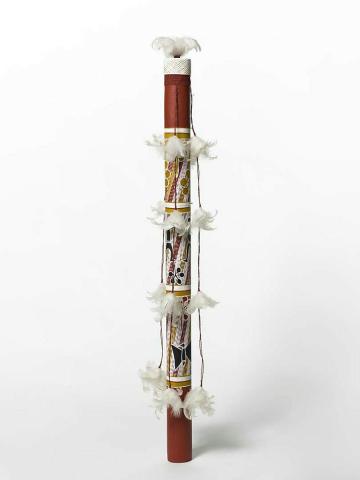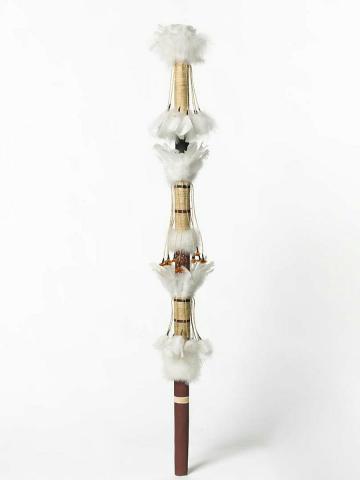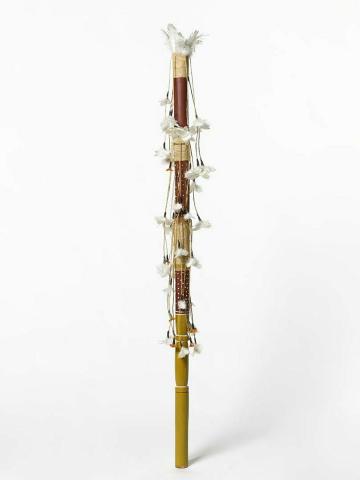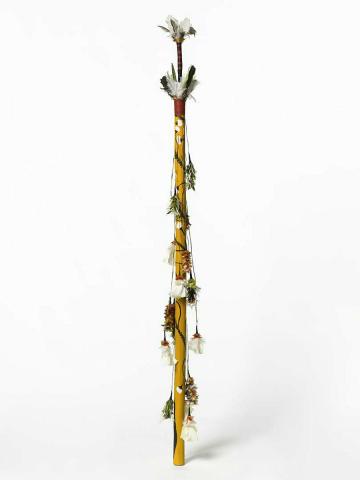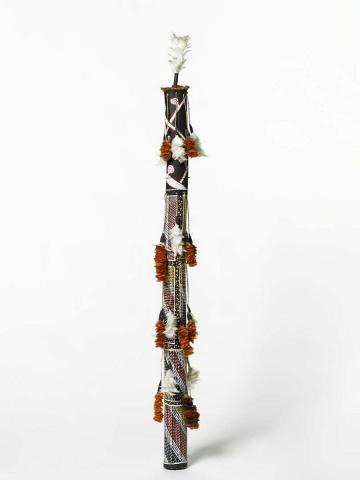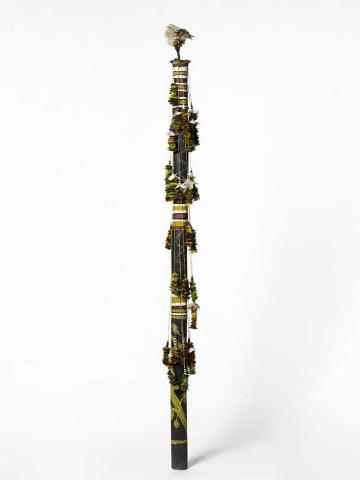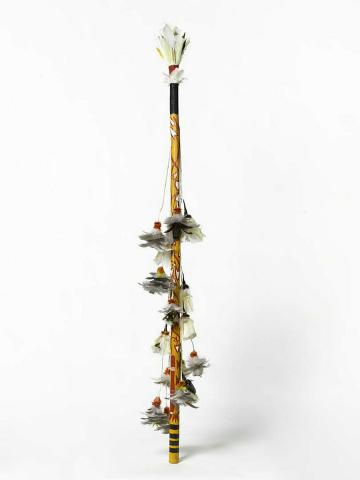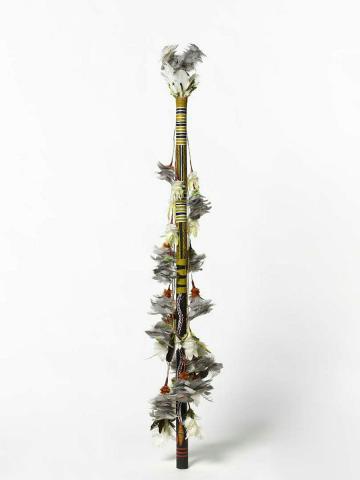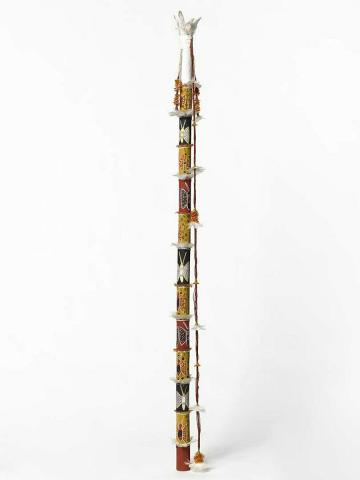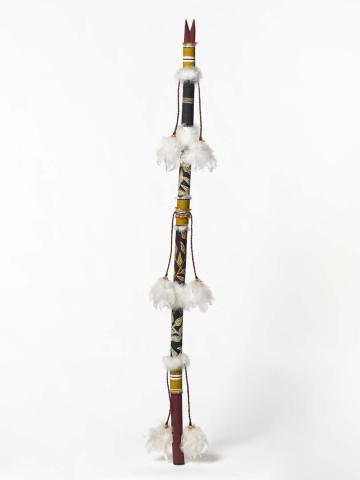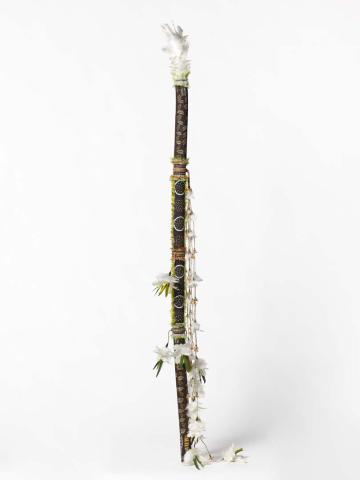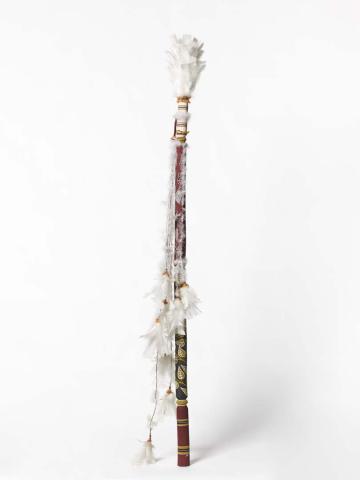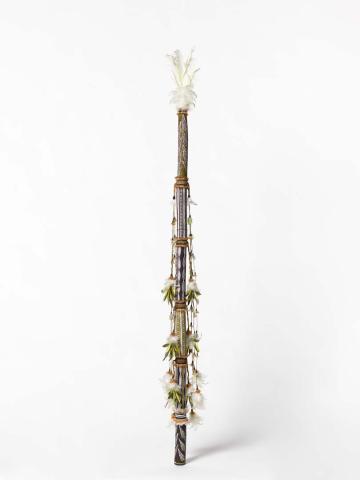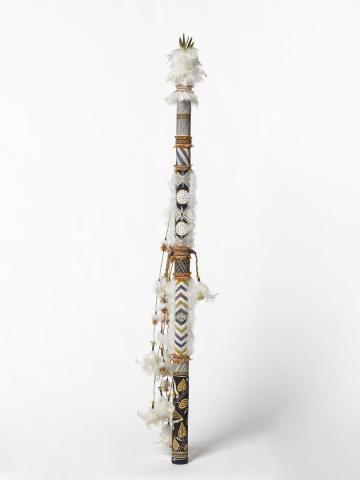LABEL: Banumbirr Morning Star Poles
By Sophia Nampitjimpa Sambono
‘Seeds and Sovereignty’ March 2024
Banumbirr Morning Star poles are crafted to resemble poles used in ceremonies in north-eastern Arnhem Land, in which the importance of the Morning Star (the planet Venus) is celebrated. The stories and ritual associated with the Morning Star are symbolic of the passage of the soul from one state of being to another — from the inner spirit world experienced prior to birth, through the physical phase of life, and onwards into the land of the dead. It is told that an old woman cares for the Morning Star, sending it out on a long string each morning before dawn and reeling it in at daylight to be nestled in her bathi (feathered string bag).
In eastern Arnhem Land, raki (string) is a vital element in ritual performances, used to make sacred objects, body adornments and bags and long, feathered pendants that hang from the Morning Star pole. The pul pul, an ornate tuft of feathers positioned at the top of the pole (or the end of a string), represents the Morning Star ready for flight.
Though made to be shown in public, these poles have been created with as much care and reverence as the objects used in Arnhem Land ceremonies and, as such, are held sacred by their makers.
Connected objects
Metadata, copyright and sharing information
About this story
- Subject
